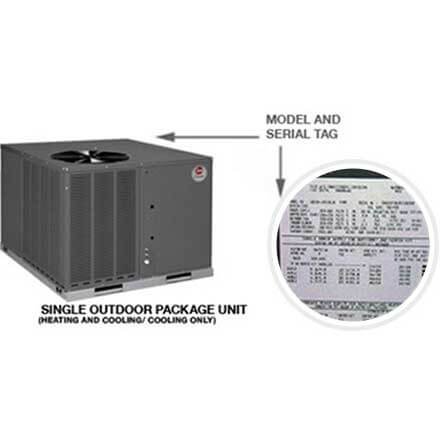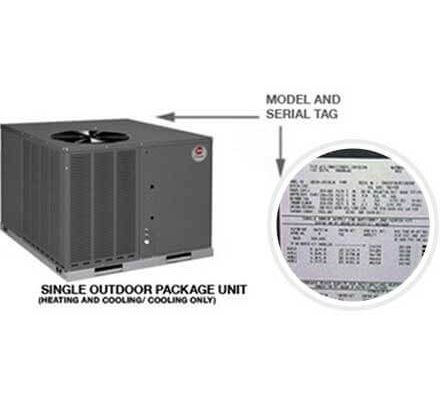
But HVAC warranties? They’re easy to misunderstand. What’s actually covered, and what’s not? Is your system protected from every hiccup, or are there sneaky exceptions? Here’s the thing: understanding the details isn’t just about reading fine print. It’s about saving money, avoiding stress, and knowing what to expect if your Rheem system ever needs a little TLC.
Let’s walk through exactly what the Rheem HVAC systems warranty covers, from the big-ticket parts to the nitty-gritty. Whether you’re looking at a Rheem air conditioner, furnace, or full HVAC setup, I’ll help you see how this coverage really works in the real world.
What Does a Typical Rheem HVAC Warranty Include?
When you register your Rheem HVAC system—whether it’s a new air conditioner, heat pump, or gas furnace—you’re signing up for a manufacturer’s promise. Think of the warranty as an official handshake that says, “If our stuff fails because of a defect, we’ll take care of it.”
Most Rheem HVAC warranties cover two main things: **parts** and, sometimes, **compressors**. Here’s how it breaks down:
- Parts coverage: This is the bread and butter. If a part fails due to a manufacturing defect, Rheem will replace it—usually for free. That means things like blower motors, control boards, fans, and internal electronics are protected.
- Compressor warranty: With air conditioners and heat pumps, the compressor is the “heart” of the system. Rheem covers this with a special warranty period, since it’s so central (and expensive to fix).
- Heat exchanger warranty: For furnaces, the heat exchanger is another core part—covered longer than most other parts because it’s built to last.
Keep in mind, warranties don’t usually cover “wear and tear” or things that break from neglect, power surges, or improper installation. The details depend on your specific model and whether you registered your product after installation.
How Long Does Rheem Warranty Coverage Last?
Let me explain how time frames work, since not all warranties are created equal. The length of your Rheem warranty depends on two big things: **product registration** and the type of system you own.
For most models, here’s a general timeline:
- Registered products: If you (or your installer) register your Rheem HVAC system within 60 days, you unlock the longest coverage. That’s usually 10 years for parts and up to 20 years or lifetime for certain components like the heat exchanger.
- Unregistered products: Forget to register? Your coverage usually drops to just 5 years on parts. Honestly, it’s a big difference, and it only takes a quick form online to register—so don’t skip it.
- Compressor and heat exchanger: Many Rheem ACs and heat pumps offer up to 10 years on compressors. Gas furnace heat exchangers may be covered for up to 20 years or even life, depending on the model.
If you’re not sure what your system’s warranty covers, check your sales paperwork or Rheem’s website. The serial number on your unit is your secret decoder ring.
What’s Not Covered by a Rheem HVAC Warranty?
Warranties aren’t magic shields—there are limits. I’ve seen homeowners assume every possible issue is covered, but that’s rarely the case. Here’s what’s usually **not included**:
- Labor costs: The warranty pays for parts, but not the technician’s time. If your blower motor dies, Rheem will ship you a new one, but you (or your contractor) pay for the installation.
- Maintenance and wear: Don’t expect coverage if you skip regular filter changes or annual service. If the issue is from lack of maintenance, it’s not warranty work—it’s on you.
- Improper installation: If someone installs your Rheem HVAC system incorrectly—maybe they didn’t pair the thermostat right, or used the wrong code during setup—failures from that aren’t covered.
- Acts of nature, power surges, or accidents: Flood, fire, lightning strike, or squirrel invasion? Unfortunately, those aren’t warranty issues. That’s why we have homeowners insurance.
If you’re troubleshooting a system problem, check if it’s an installation or user error before hoping the warranty will kick in.
How Do You Use the Rheem HVAC Systems Warranty?
Using the warranty is more like a relay race than a solo sprint—you’ll need your installer or a certified technician to help. Here’s how the process usually works:
- Spot the issue: You notice your system isn’t cooling, heating, or powering on the way it should. Sometimes, a weird code pops up on your thermostat or remote.
- Call a pro: Warranty claims almost always require proof from a certified HVAC technician. Don’t try to fix or reset things yourself in ways that break the warranty terms.
- Tech diagnosis: The technician will inspect the system, look up the error or issue, and confirm if it’s a covered warranty part.
- Parts order and replacement: Your tech will file the claim with Rheem, order the replacement, and handle installation. You pay for their time, but the covered part itself is free.
Keep your warranty paperwork and registration info handy. It speeds things up if the tech needs to pair your system with Rheem’s warranty database.
Do Rheem Warranties Cover Troubleshooting, Sync, or Remote Control Issues?
Now, you might be wondering about all those “smaller” headaches—like when your remote isn’t working, or the system won’t sync with your smart thermostat. Honestly, this is where the lines can get blurry.
Here’s the gist. If the physical remote, thermostat, or control board dies because of a *defect*, that hardware might be covered under the parts warranty. But most **troubleshooting problems**—like syncing with WiFi, resetting passwords, or changing batteries—aren’t considered defects, so they’re not usually covered.
- If your system can’t pair with a new thermostat, first check the batteries, the code or manual, or try a basic reset.
- If all else fails and it’s genuinely broken hardware (not just a setup problem), ask your technician. They’ll know if it’s warranty-eligible.
- Routine troubleshooting, maintenance, or tech support calls aren’t covered by warranty—but some dealers offer their own service packages.
Think of the warranty as protecting you from factory mistakes, not everyday hiccups or user errors.
Extended and Transferable Rheem HVAC Warranties: Are They Worth It?
You’ll see offers for **extended warranties** or “labor coverage” when you buy a new Rheem system. Should you bite? Here’s what I’d consider:
- Extended parts warranties: These usually just stretch the coverage for major parts. For most folks, the standard 10 years is plenty—HVAC systems rarely fail in the early years if installed right.
- Labor coverage: This pays the tech’s hourly rate if a covered part fails. If you hate surprise bills, it might give you peace of mind.
- Transferable warranties: Some Rheem warranties transfer to the next homeowner, but only if you follow the rules (like registering the transfer promptly). This can boost your home’s resale value a bit.
If you’re staying put for years and want zero surprises, the extended labor coverage can be a sanity-saver. Otherwise, most people skip it.
How Rheem Compares to Other HVAC Brands’ Warranties
Let’s be honest—nobody reads warranty fine print until something breaks. But if you peek across the fence at other big HVAC brands (like Trane, Lennox, or Goodman), how does Rheem stack up?
In general, Rheem’s warranty coverage is competitive:
- 10 years on parts, matching industry standards (as long as you register)
- Strong heat exchanger and compressor warranties
- Clear online registration and claim process
Where you’ll notice differences is usually in labor coverage. Some brands offer longer “included” labor terms, while others—like Rheem—primarily cover just the parts. Also, the requirement to register for full coverage is now standard for nearly all HVAC brands.
If you want end-to-end coverage (parts *and* labor), look for local installers who sell a bundled “warranty plus maintenance” package. Sometimes these are more about service quality than who made the hardware.
The Bottom Line: Making the Most of Your Rheem HVAC Warranty
Warranties can feel like a maze, but honestly, the Rheem HVAC systems warranty is pretty straightforward once you break it down:
- Register your system right after installation for the longest coverage.
- Know what’s covered—mainly parts and certain major components, not labor or accidents.
- Handle all repairs and troubleshooting with a certified HVAC tech so you don’t void the warranty.
- Keep up with regular maintenance to avoid blame-game headaches if something goes wrong.
In the end, a good manufacturer’s warranty gives you peace of mind—not just for those rare breakdowns, but as a sign that the company stands behind its systems. If your Rheem HVAC system ever runs into trouble, you’ll be glad you know how your coverage really works—and what to expect, both good and bad. Now, you can enjoy that cool breeze or warm air with a little more confidence.
